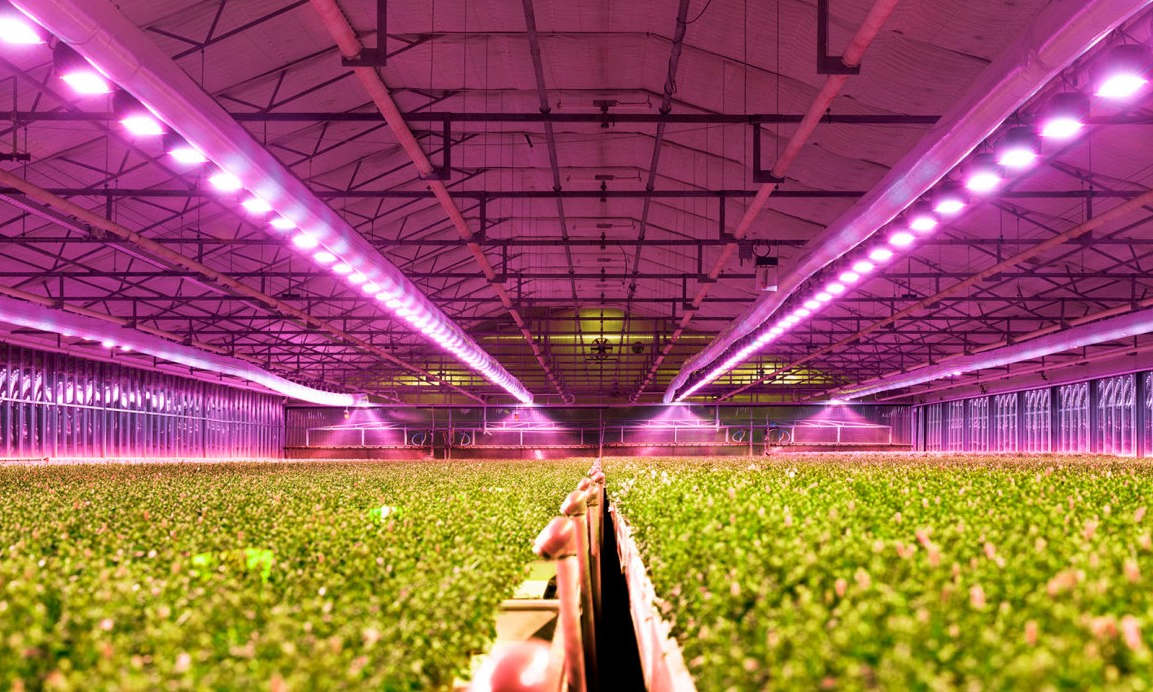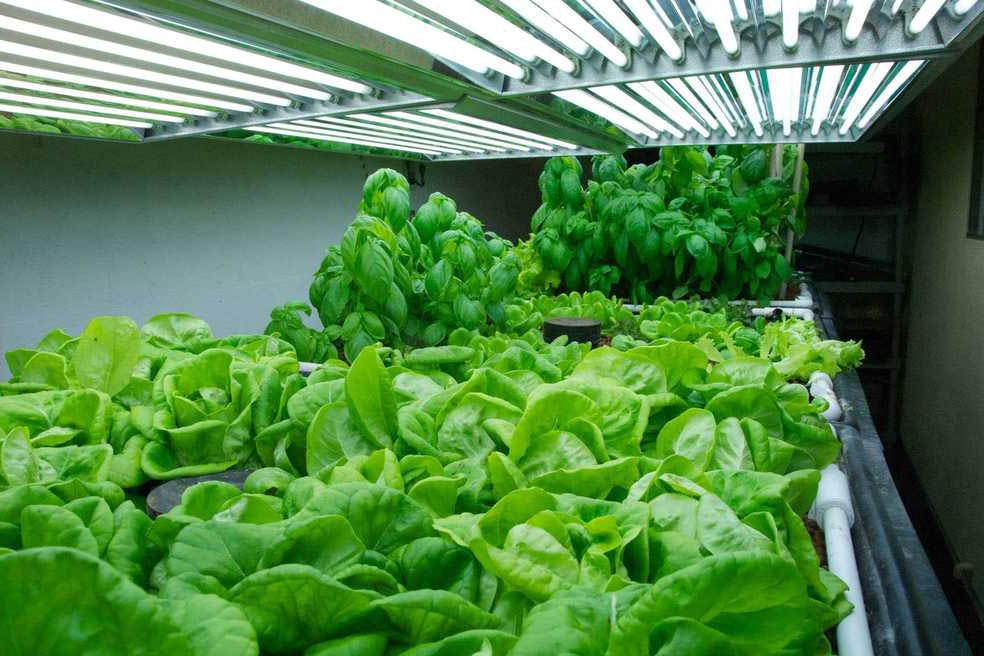Folks who are new to indoor gardening often find it challenging to determine how much energy (by wattage) is needed to create ideal growing conditions for plants. The truth is, setting up a great indoor growing system is one thing, and supplementing your plants with correct lighting is another. So, how many watts per square foot for LED grow lights?
One square foot of indoor grow space will typically require a minimum of 32 watts and a maximum of 50 watts LED grow lights. However, the actual wattage requirements per square foot of growing space will vary depending on your plant type, growth phase, and total growing area. Note that too little or too much light intensity could mess your entire growth system.
This article will provide a detailed answer to this question to help you choose the correct LED wattage for your growing space. You’ll also learn the essential factors to consider when deciding on the LED grow light watt level to use. Read on to learn more.
How Many LED Light Watts Per Square Foot Do I need?
First, you need to know that light is one of the essential components of your grow room or grow tent. Your plants need it to manufacture their food, so without it, you may have to contend with low-quality yields.
In determining how many LED light watts per square foot you need; you’ll want to get it right the first time. This will help you avoid wasting time, energy, and money when setting up your grow room.
If I tell you the exact LED wattage requirements per square foot of crop right off the bat, I’ll be lying to you. This is because there’s no generic answer to this question.
Ideally, the number of LED watts required per square foot will vary depending on multiple factors. You must answer the following questions when figuring out how many watts of LED grow lights to use per square foot:
Question 1: What’s the Nature of Your Crops?
Make sure you consider the nature of crops you’re growing when deciding on an LED grow light.
While full-cycle LED lights will grow a plant from seedling to flowering, some LED grow lights are specially designed for certain types of growth.
If you’re a commercial grower, I recommend that you get LED grow lights with ETL or UL certification.
But if you’re a small-scale farmer growing small plants like succulents, herbs, and vegetables, it’s best to use LED modules like those from Thrive Agritech or GE Lighting.
Apart from the nature of your crops, other factors you should keep in mind include:
- Plant Type
Knowing which plants are in your grow tent will help you decide on the wattage requirements per square foot.
Cannabis, tomatoes, and other plants with canopy require high light intensity to penetrate through their foliage. Therefore, you’ll need to use LED lights with a higher wattage for proper growth.
Other plants like herbs need low to average light intensity. In that case, it’ll be okay to use LED grow lights with a lower wattage.
- Growth Stage
Each plant goes through at least four growth stages, from germination to flowering. Light intensity requirements vary by growth phase.
For example, plants need little or no light during germination. When they reach their vegetative and flowering phases, they will intensify their need for light.
You’ll need to supplement your plants with higher light intensity to help them produce larger buds at flowering.
All the same, ensure your plants get more dark hours in the flowering phase to help with their growth and development.
- Number of Plants In Your Indoor Grow Space
Be sure to keep a record of the number of plants in your grow tent. Also, remember that plants need some space to breathe.
In that case, it’s best to grow the correct number of plants in your indoor garden if you want to get the maximum harvest.
Meanwhile, if you’ve got a higher number of crops in your grow space, you’ll need to shower them with higher light intensity. This is to allow each plant to receive adequate lighting.
Question 2: How Big Is Your Grow Space?
This is another factor that will dictate the LED grow watts to use. Typically, a larger grow tent will require a higher LED light intensity for plants to grow faster and stronger.
As a general rule of thumb, flowering medical plants require 32 watts of actual wattage per square foot of grow space.
For example, let’s assume that you have 16 square feet of growing space and are growing high-light plants. In that case, you’ll need at least 500–550-watt LED grow light.
This is applicable if your plants are in their flowering stage and are congregated in a single area. High-light plants in the vegetative growth cycle will require about half this wattage.
There should be about 11-18 watts LED grow lights per square foot of growing space for low-light plants like lettuces and herbs. Nevertheless, this will vary depending on the type of crops you have and their preferred light levels.
Here’s a quick standardized wattage level guide that will help you determine the number of LED watts to use during the vegetative phase of growth.
Remember, plants require about 32 watts of actual wattage per 1 sq. ft. of grow space.
Quick Guide (Watts Per Coverage Area)
- 6’ x 6’: 1152 watts(1000-1200 watts)
- 4’ x 8’: 1024 watts(900-1100 watts)
- 5’ x 5’: 800 watts(700-900 watts)
- 4’ x 4’: 512 watts(500-650 watts)
- 3’ x 3’: 288 watts(250-300 watts)
- 2’ x 4’: 256 watts(240-300 watts)
- 2’ x 2’: 128 watts(120-140 watts)
- 2’ x 1’: 62 watts (60-70 watts)
- 1’ x 1’: 32 watts(30-40 watts)
As you can see, different grow room sizes will require different LED light intensities. Note that this is just a standardized wattage level guide for regular crops that require average light intensities at their vegetative phase.
Question 3: What Kind of LED Grow Lights Are You Using?
There are three LED grow light types available today. LEDs differ in their color spectrums, heights, and heat outputs.
A full-cycle LED light might be the ideal choice if you’re growing plants from seedling to flowering. However, plants may only need LED grow lights for blooming.
For high-light plants and vegetables in the flowering phase, there are several light options to choose from.
You can purchase single-channel lights with ON/OFF function, 2 channel lights with the vegetative and blooming mode, or programmable lights like Mars Hydro and Cirrus LED.
Actually, programmable lights are preferable because they allow you to customize spectrums, set light schedules, and modify intensities to meet your plants’ needs.
Additionally, there are DIY kits for indoor growers on a budget. You’ll be able to assemble your own light and make do with it.
How to Decide on The Number of LED Watts To Use Per Square Foot
Follow the steps below to determine how many watts per square foot for LED grow lights.
Step #1: Determine How Much Space You Have in Your Grow Area
First, measure both the length and width of your grow area in feet. Then, multiply the results to get the size of your grow space.
Here are the average light intensities for different grow room sizes:
- 1 sq. ft. – 32W
- 2 sq. ft. – 62W
- 4 sq. ft. – 128W
- 6 sq. ft. – 256W
- 9 sq. ft. – 288W
- 12 sq. ft. – 418W
- 16 sq. ft. – 512W
- 20 sq. ft. – 640W
- 25 sq. ft. – 800W
- 30 sq. ft. – 960W
- 36 sq. ft. – 1150W
- 40 sq. ft. – 1280W
Step #2: Determine the Light Spectrum Requirements
The light intensity, otherwise known as light spectrum, is the Photosynthetically Active Radiation required by plants. Usually, plants need different light intensities at different stages of growth.
The light energy that plants consume per second is denoted in µmol/m2/sec. This shows the micromole per square meter per second, which is the light intensity that plants use for photosynthesis.
The light intensity requirement varies depending on your plant’s growth phase. For optimum yield, maintain the following light intensities for your crops:
- The seedling growth phase – 200-400 µmol/m2/sec
- The vegetative growth phase – 400-600 µmol/m2/sec
- The flowering growth phase – 600-1000 µmol/m2/sec
The green, blue, and red wavelengths determine the LED light’s photosynthetically active radiation. Those light spectrums prove helpful for more vigorous growth.
I recommend the Advanced Platinum Series LED Grow Light as it ensures good lighting for plants. It has the highest PAR/lumen output per watt of any LED grow light out there.
Step #3: Count the Number of Plants in Your Grow Tent
Like I said earlier, the higher the number of plants in your grow area, the more light intensity you should use. Furthermore, plants like cannabis need to be trained to grow in a specific style to achieve the best results.
The particular growing style you choose will also determine how many plants you can grow per square foot. Here are the popular growing techniques and the number of plants they can accommodate.
- Sea of Green (SOG)
With this technique, one square meter of the grow space can accommodate 4-16 plants without a problem. You’ll want to use a high-wattage LED light to get the best yield.
- Screen of Green (SCROG)
Here, a square meter of the grow space is enough for only one plant. You don’t need an LED light with a high output for the SCROG technique.
- Topping (Pruning)
Much like the SCROG, one square meter lets you grow only one plant. Under this technique, you’ll want to apply the same LED light requirements as the SCROG.
- Low-Stress (LST)
Under the LST technique, you’ll be able to grow four plants in one square meter of your grow area. Its light requirement is pretty much the same as that of SCROG and Pruning.
Essentially, the best 300-watt LED grow light should provide adequate light spectrum for1-6 plants. However, this may vary depending upon how many plants you have per square foot.
The guide below shows the standard wattage requirements for the different number of plants:
- 1 plant per sq. ft. – 30 to 40W
- 2 plants per sq. ft. – 60 to 80W
- 4 plants per sq. ft. – 120 to140W
- 6 plants per sq. ft. – 180 to 200W
- 8 plants per sq. ft. – 240 to 300W
- 10 plants per sq. ft. – 300 to 340W
- 12 plants per sq. ft. – 340 to 380W
How To Calculate The Wattage Requirement For Grow Tents
Calculating the number of watts needed for your indoor grow area is a straightforward process. I’ll use an example here to bring you up to speed.
Assuming your grow tent size is 3 square feet. Here, you’re growing 9 plants using the LST technique;
So, your total grow space will be 3 x 3 = 9 sq. ft.
One sq. ft. of indoor grow space requires at least 32 watts.
That means your grow room will need;
9 sq. ft. x 32 watts = 288W LED grow lights.
Final Thought
As we part ways, I’d like to remind you that there is no hard-and-fast rule for determining the correct wattage for any indoor grow space.
The watts needed per square foot for LED grow lights will vary based on the type of your plants, the size of your grow area and the nature of lights your plants need.
Getting to know all these factors will enable you to choose the best watts per square foot for your indoor garden.
Finally, ensure that you buy the best LED grow lights that won’t harm your crops with too much brightness.
Good luck with your indoor gardening!





